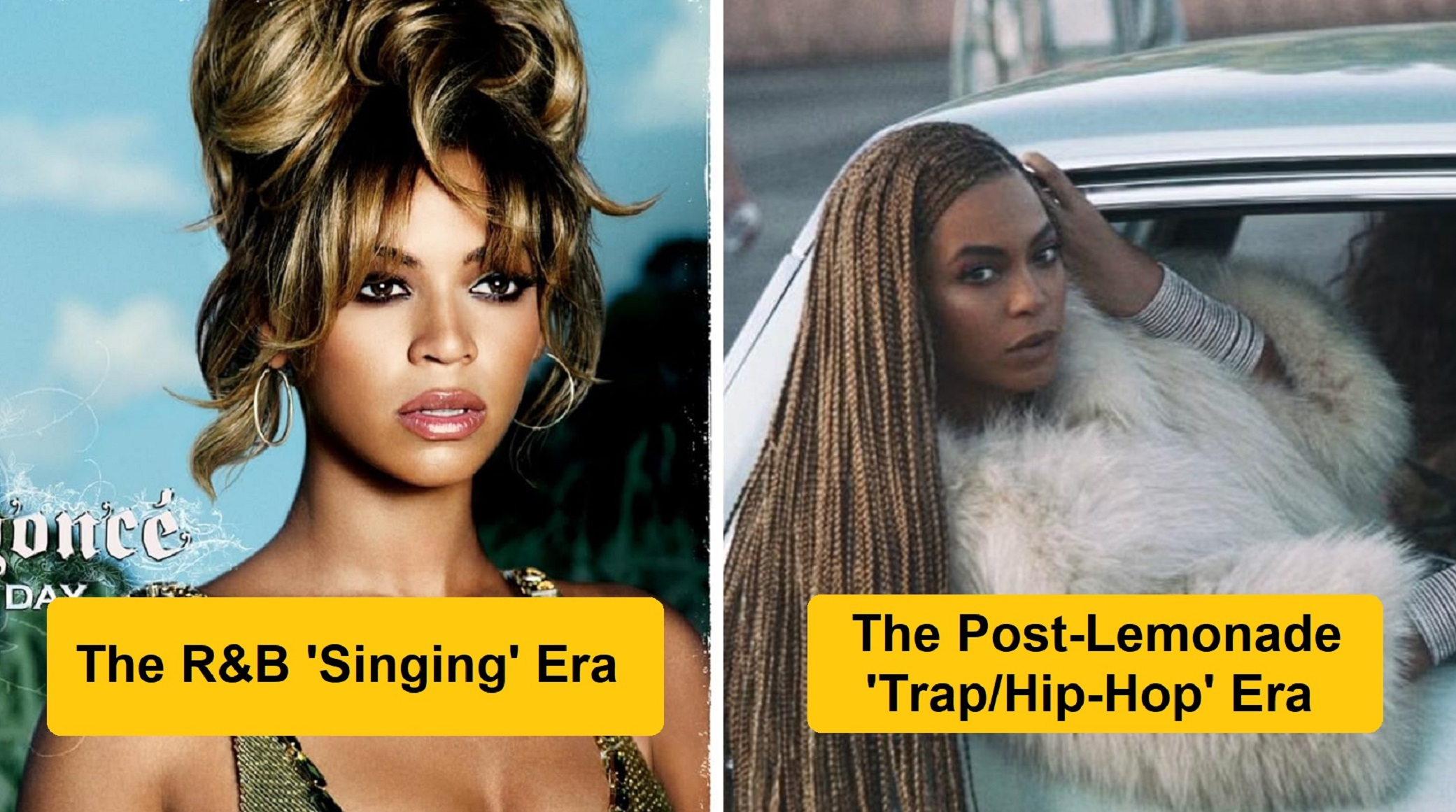Few artists in modern music history have reinvented themselves as boldly and successfully as Beyoncé. From chart-topping R&B harmonies and brassy funk horns to bass-heavy 808s and moody triplet flows, her sonic journeys have not only reflected changing music trends but frequently reshaped them. Today, fans passionately debate one key question: the Beyoncé of classic R&B energy vs the Beyoncé who embraced trap, experimental hip-hop, and rhythmic reinvention — which era hits harder?
To understand the divide, it helps to revisit B’Day (2006), the album that cemented Beyoncé as a force beyond Destiny’s Child. Released on her 25th birthday, the album was a concentrated burst of R&B, funk, and soul, powered by live instrumentation, bold brass sections, and dynamic vocal performance. Songs like Déjà Vu, Ring the Alarm, and Get Me Bodied pulled from funk-driven grooves, horn-stacked rhythms, and vocal layering that echoed old-school soul energy with a modern pop punch.
The album earned widespread commercial success, Grammy recognition, and remains a defining blueprint for mid-2000s R&B excellence source. Its production leaned into swaggering basslines, call-and-response vocal stacks, tightly synchronized harmonies, and a stage-ready energy rooted in Black musical tradition. This was Beyoncé in full R&B command—vocally acrobatic, melodically rich, rhythmically infectious, and built for arena choreography.
Then came Lemonade (2016), the album that not only expanded her artistry thematically but also shifted her further into experimental sonic territory. While R&B continued to live in her vocal DNA, the production palette broadened dramatically. Lemonade incorporated blues, rock, gospel, country, and hip-hop textures, with songs like Formation leaning into Southern bounce rhythms and politically charged rap-style delivery source. The album’s success marked a turning point: Beyoncé was no longer just dominating within genre lines—she was dissolving them.
By the time of Everything Is Love (2018, with JAY-Z as The Carters) and later Renaissance (2022), Beyoncé was leaning even harder into rap-cadence phrasing, trap-adjacent percussion patterns, layered 808 production influences, and curated samples. While Renaissance primarily celebrated house and dance culture, the rhythmic pocket, vocal phrasing, and hip-hop sensibilities within her delivery reflected a post-trap music landscape that had reshaped pop and R&B alike source. Across features, verses, cadences, and melodic structures, Beyoncé increasingly played with rap flows, fragmented phrasing, lower-register vocal styling, and beat-driven intensity rather than classic R&B melisma alone.
This evolution fueled fan debates that still dominate Beyoncé forums, playlists, and music discussions today. One camp celebrates Beyoncé’s R&B golden era—vocals stacked sky-high, melodies front and center, performance power rooted in soul tradition. The other proudly champions her boundary-breaking, genre-fluid era where hip-hop, trap, bounce, and rap cadence influence the rhythmic DNA of her music.
Both eras share one truth: Beyoncé has never followed trends—she absorbs, reinvents, and delivers them at the highest level. But preference is personal. Do you gravitate toward the fiery horns, vocal runs, and R&B swagger reminiscent of B’Day? Or do you prefer the bold, bass-driven, rhythm-first, culturally layered Beyoncé that emerged after Lemonade?
There is no wrong answer, only a favorite era waiting to be declared.
Now it’s your turn—Beyoncé the R&B powerhouse or Beyoncé the hip-hop/trap-influenced innovator?
Cast your vote in the poll below and choose your era.

